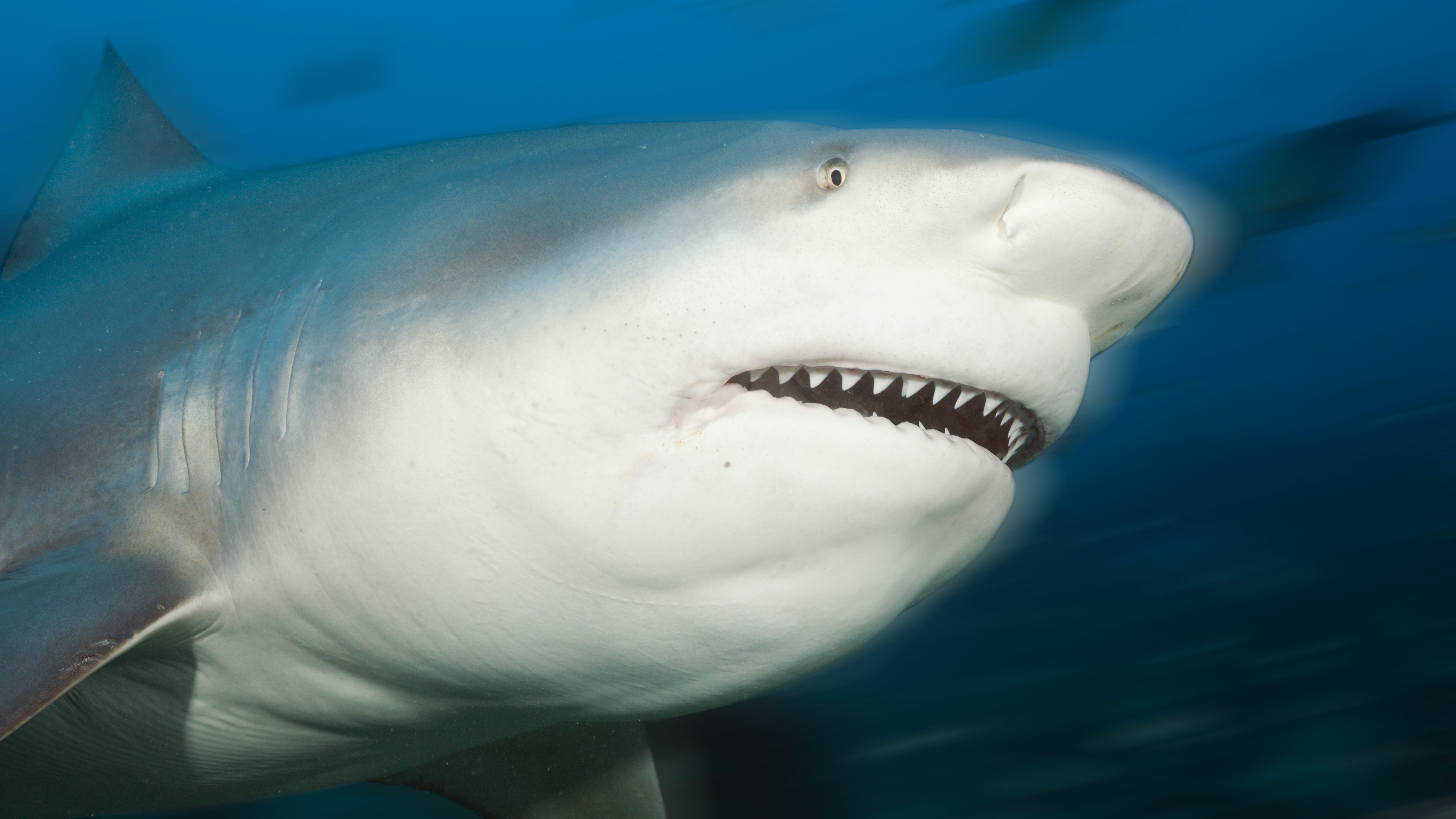The strange story of sharks that lived in a golf course pond for 20 years — then vanished
In the 1990s, a group of juvenile bull sharks were left stranded in a golf course pond in Australia, where they thrived for decades. Now scientists are trying to understand why.

For nearly 20 years, a group of bull sharks lived in an artificial pond on an Australian golf course after having been stranded by receding floodwaters. Then, they vanished.
A new paper published Aug. 18 in the journal Marine and Fishery Sciences chronicles the history of this unique population.
Bull sharks (Carcharhinus leucas) are unusual in that they can live in freshwater environments and are found in rivers around the world. Although their freshwater sojourns are typically temporary, bull sharks have occasionally been trapped in freshwater environments for long periods — and apparently thrived.
The golf course sharks were likely washed inland during periods of flooding. The Carbrook Golf Club, southeast of Brisbane, is directly adjacent to the Logan and Albert rivers. Summer storms occasionally result in rainfall that breaches the banks of these rivers, inundating the surrounding floodplain. Given that the course is less than 6.2 miles (10 kilometers) inland from the coast, it is well within the freshwater zone inhabited by bull sharks.
The sharks ended up in the pond, which was the remnant of a sand mining operation, at some point between 1991 and 1996. During that period, three floods breached the rivers' banks and swept inland, bringing the sharks with them. When the floodwaters receded, the sharks were stranded.
They were first detected in 1996, and while the pond — which is around 2,300 feet (700 meters) long and 1,250 feet (380 m) deep — is relatively small and shallow, no formal population counts were ever established. The sharks were, however, frequently visible, often coming near the shore. Their presence was welcomed by the golf course management, and the species became a mascot for the establishment.
Get the world’s most fascinating discoveries delivered straight to your inbox.
The sharks were likely juveniles when they found themselves stranded but eventually grew up to 9.8 feet (3 meters) long, according to observational reports. Their feeding habits were not scrutinized, but it is likely that species that were also introduced to the pond during flooding events — such as flathead grey mullet (Mugil cephalus), Indo-Pacific tarpon (Megalops cyprinoides), mangrove red snapper (Lutjanus argentimaculatus) and yellowfin bream (Acanthopagrus australis) — provided ample sustenance.
"If sharks can get the food they need, being in these low-salinity environments can be super beneficial because there are fewer predators," Michael Heithaus, a shark biologist at Florida International University who was not involved in the study, told Live Science. "Pups in some nurseries may go years in virtually fresh water, so it isn't too surprising they survived, as long as there was plenty of food."
The sharks were last seen in 2015. Another flood in 2013 may have allowed some of the sharks to escape back into the adjacent riverways, though the paper's authors think others may have simply died and sank. One carcass was recovered by golf course staff while the sharks were still active in the pond.
While the pond appears to be devoid of sharks now, this strange episode illustrates the adaptability of these primeval predators and their tolerance of freshwater environments. The team said the case of the golf pond sharks is the longest known example of bull sharks continuously inhabiting a low-salinity environment.

Richard Pallardy is a freelance science writer based in Chicago. He has written for such publications as National Geographic, Science Magazine, New Scientist, and Discover Magazine.



